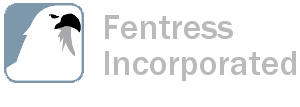Over the past several years, there have been numerous articles written about the continuing Return to Office (RTO) trend. Almost all focus on what employees are giving up with RTO. Indeed, there are many things that employees will lose. The most obvious losses resulting from RTO are the loss of flexibility that comes with working from home (WFH) and loss of time from commuting into the office.
Very few articles, however, focus on the benefits of RTO. Given that the multi-year RTO trend is rising, I think it’s time to look at the bright side of RTO, so to speak. But first, let’s look at where we are in 2025.
Current State of RTO
By the end of the first quarter of 2025, numerous large corporate employers as well as the federal government had already called their employees back into the office in greater numbers. Calls from the federal government were a result of the change in administration while the corporate sector was affected mostly by labor economics: there are simply more job seekers than open roles, and hence less incentive for employers to offer flexible work arrangements. Despite this situation, remote or hybrid jobs are still in high demand by prospective employees—just 20% of LinkedIn postings are for those jobs but they receive 60% of the applications.
From the employee’s perspective, the appeal of WFH is still strong. A Korn Ferry survey of 15,000 global professionals revealed that although 59% of respondents reported working full-time in an office, just 19% considered that an ideal work model. The vast majority preferred either a hybrid (48%) or fully remote (25%) arrangement. A recent Gallup poll of remote U.S. workers indicated that 64% would seek a new job if they weren’t allowed to work remotely some of the time. And a Stanford University global study of 16,000 college graduates across 40 countries showed that, on average, the graduates expect to work outside the office half of the week.
Nevertheless, RTO is gradually replacing WFH with the average days per workweek spent out of the office in the Stanford study inching down to 1.27 in 2024 (from 1.33 in 2023 and 1.61 in 2022). National office occupancy statistics tracked by Kastle Systems also show incremental increases in 2025 compared with previous years with many individual cities hitting multi-year highs off of the pandemic lows.
If RTO is becoming more prevalent despite its unpopularity with workers, what are its silver linings?
More Than Just Collaboration
Many of the calls to increase RTO by government and company leaders center around the desire to increase collaboration among employees. While it can be argued that “collaboration” is just a catch-all term leaders use to get employees back into the office no matter the reason, collaborative time remains an important part of work. A recent webinar by Jones Lang LaSalle (JLL) listed the average time spent in the office as follows: 48% focused work (i.e., head-down, individual), 29% face-to-face collaborative work, and 23% virtual collaborative work.
Intuitively, it makes sense that collaborating in-person is more effective than collaborating over Zoom or Teams calls. This seems especially true for deep dive and other solution-oriented meetings as opposed to status-type calls. Therefore, it is not surprising that some studies have shown a permanent boost in collaboration due to RTO compared to pre-RTO arrangements.
The JLL webinar also lists several other activities that have value that aren’t purely focused or collaborative time. These include social connections with colleagues, informal advice and knowledge sharing, rest and recharging, time in shared spaces and company culture, learning and development, and development of professional relationships. These are interesting since they touch upon “soft skills,” the umbrella term for interpersonal and other non-technical skills that indirectly contribute to success in the workplace.
In addition, JLL clients have asked them to design offices to encourage a spectrum of social interaction that occurs in the workplace. A variety of specialized spaces that support both focused and collaborative work is designed to bring out five key types of social interaction among employees. These include planned collaboration, spontaneous discussions, informal learning, team connectivity, and community or belonging. All five are activities that appear to be more effective conducted in-person than remotely.
Main Benefits of RTO
The articles and webinars I’ve cited above suggest that RTO will lead to greater long-term collaboration and innovation within companies and government organizations. But these benefits tend to accrue to the employer more so than to the employee.
What are the main benefits to more in-person work from the employee’s perspective?
- Greater Career Opportunities. It’s difficult to advance in a career even if you go into the office five days per week. Fully remote and mostly remote hybrid employees could be passed over for promotions in favor of employees that are in the office more often. Younger employees may enjoy the flexibility and cost savings of WFH, but they may be limiting their careers and long-term earning potential. Employers want managers that can lead both in-person and remote teams and individual contributors that can work well with a variety of people. This doesn’t mean employees can’t WFH at all but going into the office at a greater frequency could help advance your career.
- Stronger Sense of Team and Community. Working remotely during the pandemic was a necessity, but it wasn’t for everyone. Some people missed chatting casually with colleagues and eating lunch with them. Even now several years after the worst of the pandemic, there are employees who welcome it. One anecdote is an Amazon software engineer who said working in an office helps him stay focused and collaborate better. Isolation, disconnection, and procrastination can occur for some employees after prolonged remote work. Local businesses can also suffer from a lack of people going into the office. Higher rates of RTO should help those team members who are feeling some of the negative aspects of remote work and the broader community around the offices.
- Better Informal Learning. As mentioned above, soft skills still matter in the workplace. The ability to witness soft skills and exemplify them is more limited working remotely. In every organization, there are aspects of the work that can be “picked up” or learned more easily when seen in-person. Younger employees could benefit from seeing how organizations operate in-person rather than from afar through emails and Zoom calls. Even older employees could benefit from access to senior leaders via internal networking, an important type of informal learning.
Final Thoughts
It may be hard to find a subject that has more of an emotional response for both employees and employers than RTO. The pandemic helped usher in the age of remote work by proving it was possible to conduct most business remotely. Workers benefited by gaining scheduling flexibility and eliminating commuting and other in-office costs, benefits of WFH that they are rightfully trying to maintain.
However, it was only a matter of time before the labor market swung in a direction favorable to employers. With RTO gaining steam year after year, employees are staring at an inevitability. There are pros and cons to both remote and in-person work. Looking at the bright side of RTO may actually help employees get to a new, long-term equilibrium where both remote and in-person work peacefully coexist.
__________________________________________________________________________________________________________________




-1.jpg)

.jpg)
.jpg)
.jpg)
.jpg)
.jpg)
.jpg)


.jpg)
.jpg)
-1.jpg)
.jpg)
.jpg)
.jpg)
.jpg)
.jpg)

